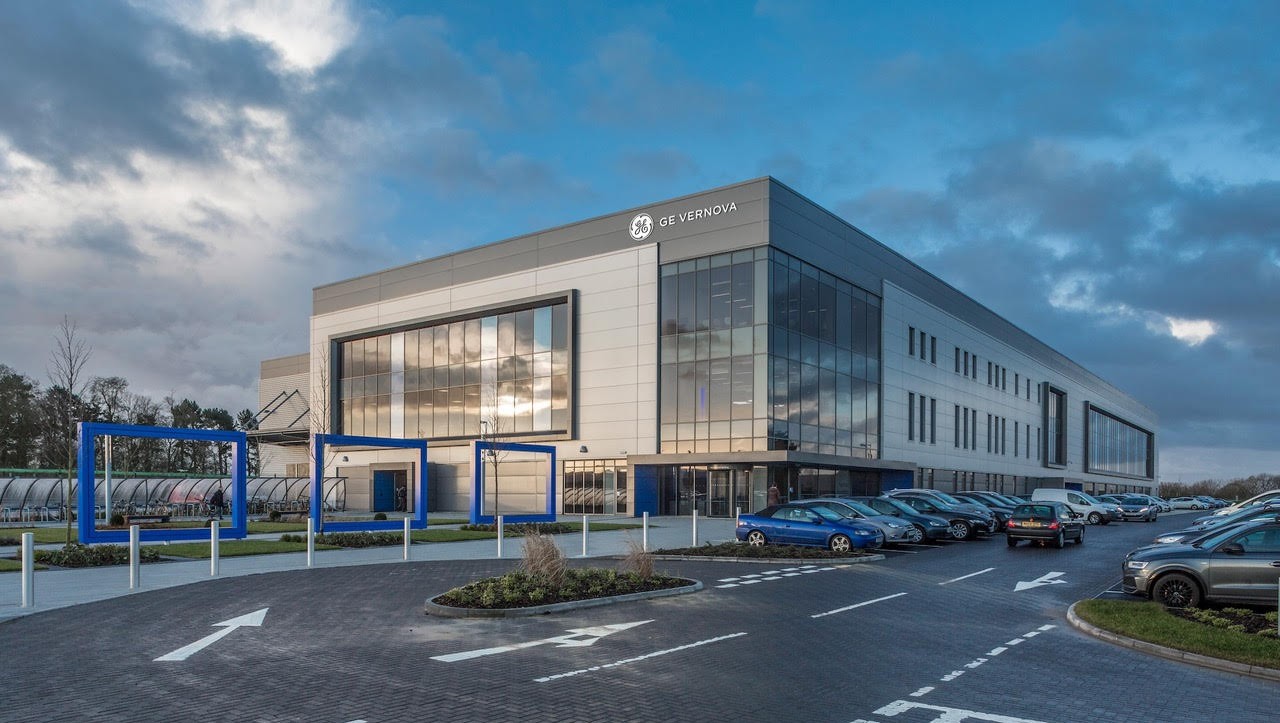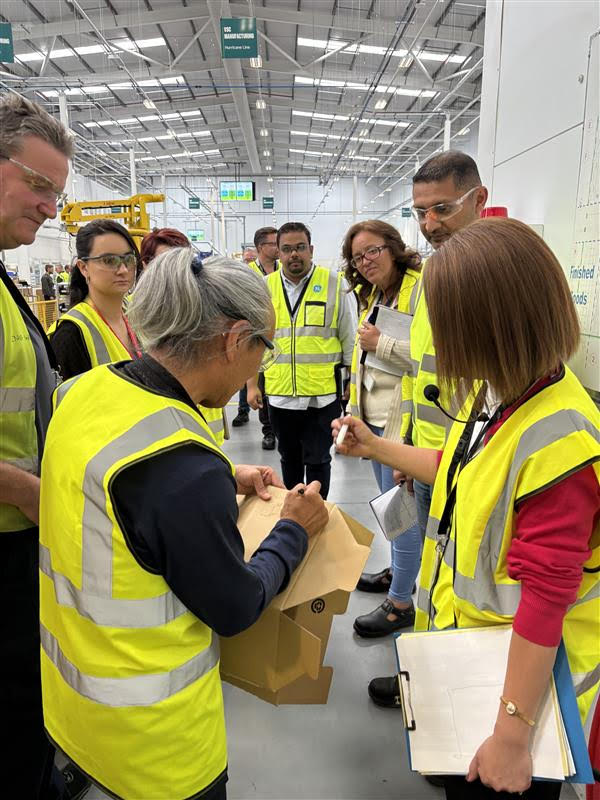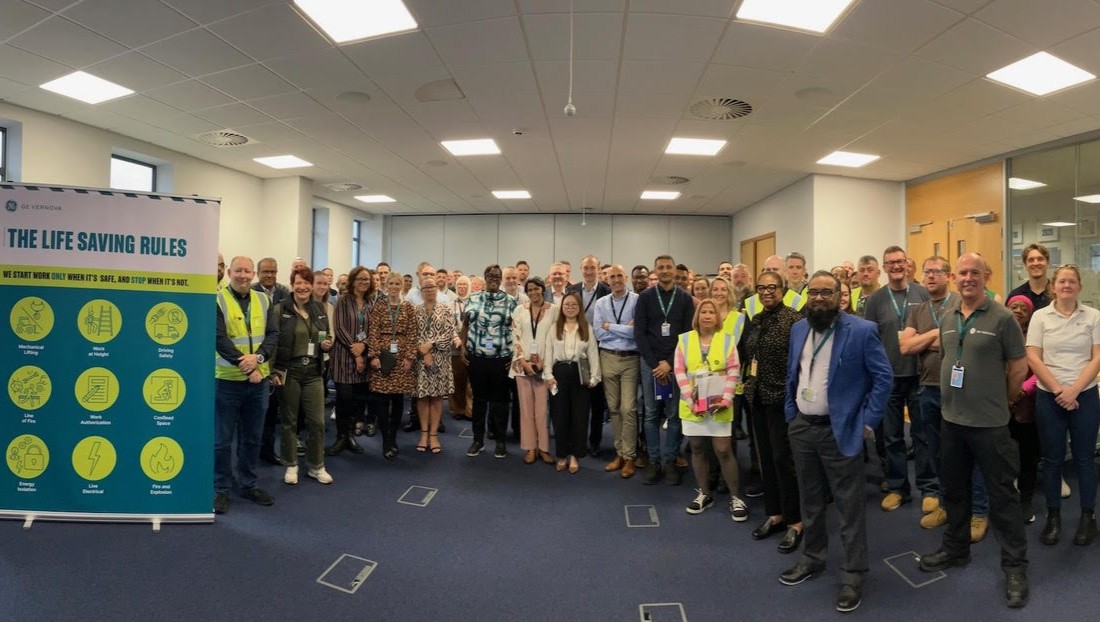In an increasingly electrifying world, efficiency is crucial. The global energy sector is adopting HVDC (high-voltage direct current) technology for its superior capability and cost-effectiveness over long distances. HVDC systems can transmit more than three times as much power as alternating current (AC), with up to 50% fewer losses. It is ideal for supporting existing systems or building new power highways, which is why power producers are using HVDC technology to move electrons across long distances, whether for interconnecting grids between states and countries or integrating renewables. HVDC transmission works by converting alternating current (AC) to direct current (DC), carrying electricity up to thousands of miles, before converting it back to AC for utility distribution. To meet surging demand for this technology, GE Vernova needs to dramatically increase production of the valve at the heart of HVDC systems: the critical component that enables AC-to-DC conversion and back.
HVDC valves are manufactured at the Redhill Facility in Stafford, England, where GE Vernova announced a major expansion late last year. “If we were going to meet the demand of projects we know are coming in, we needed this plant to increase the valves’ production by 40%,” says GE Vernova Global Grid System Integration Lean Leader Lynne Pearson.

During CEO Kaizen Week earlier this year, Pearson and her colleagues received a request to run what would be the Stafford site’s first major lean event in September. This would be not just a single kaizen event — where employees at all levels assemble to improve a given work cell — but a “shingi” event, a more wide-ranging and thorough improvement exercise, which in this case consisted of eight kaizens running simultaneously at the same location. (The term comes from the Japanese shingijutsu, meaning “new technology” or “better way.”)
As lean principles dictate, work began eight weeks before the scheduled shingi event. Pearson, along with Valves Plant Manager Bhavesh Mistry and Valves Lean Lead Zakir Hussain, did initial genba walks (genba meaning the “actual place” where the work gets done) through the work site to develop a value stream map (VSM). The VSM provided a visual representation of the workers’ actual flow during production, identifying choke points and waste. To prioritize, they employed the Pareto principle, which holds that 80% of such waste comes from 20% of the causes. “If you address the 20%,” Pearson explains, “you can eliminate 80% of the problem.”
Enter the Sensei
One place the lean crew found significant improvements was in “pick face,” the study of how assembly workers access supplies — where they go, what they grab. “That’s a central lean principle, to have the smoothest flow possible,” says Pearson. They deployed an “andon,” a visual indicator that signals whether a part is ready or a tray needs replenishing (in this case a light that flashes green, red, and yellow). During these crucial eight weeks of pre-work, lean leaders ensured that they had the right data and the right people, those who actually experience the pain points firsthand — in this case, experts from valve packing, test cells, or the power electronics unit (PEU) cell. “Pre-work can either make or break a kaizen,” Pearson says.
When September 15 came, the population at the Stafford Redhill manufacturing plant doubled, and for one week it remained a hive of intense and highly focused activity. More than 100 employees — from lean leaders to chief operating and technology officers — assembled for seven kaizens at the site. (The eighth kaizen was at a nearby warehouse.) Joining them was the initially striking presence of Sensei Junichi Nakazawa, from Japan’s Shingijutsu Institute, and his interpreter, Kaori Mincer.

“He’s very passionate about lean, so he will encourage you and be very proactive in his approach,” Pearson says of the sensei. “We may see valve manufacturing, but he brings experience from many different types of industries and corporations.” Once they saw Nakazawa-sensei roll up his sleeves and wade into a test cell, Stafford’s employees became more receptive. “His passion was infectious,” says Pearson, who calls the shingi week “very intense and very beneficial” and reports that she got more than 19,000 steps in every day.
From Baby Steps to One Team
By Friday, the slightly manic shingi energy had settled into something new at Stafford. “We now have a whole new group of lean believers,” Pearson says. Global Supply Chain Leader Aurelie Nihuellic counts herself among them. “This was the first shingi event for the Grid Systems Integration Business. Driven by curiosity, we eagerly embraced the challenge with enthusiasm and full engagement,” says Nihuellic, who leads the global supply chain and manufacturing teams. “The team was exceptionally well prepared, embodying our GE Vernova Way One Team mindset through diverse participation and shared strengths.”
Nihuellic adds that she and her colleagues are enthusiastic about the promising road map for 2026, which integrates the GE Vernova lean operating system and the lean road map. They are deeply committed to initiating another shingi event to drive further improvements.

By improving standard work, further optimizing the site layout, and reducing cycle time, the kaizen events at the Stafford facility have increased production capacity for valve modules by 40%, while also making 37 different safety improvements. In the pick face storage area, 46% more space was freed up, and cycle times improved by 56% in the packaging area and by 23% in the test area, in line with the team’s targets and typical double-digit gains from well-executed kaizen events. All of this enables the Grid System Integration business to improve their product and process efficiency for readiness to meet growing demand.
“Now it’s all about sustaining,” Nihuellic says. “We need to make sure that we continue to put what we learned into concrete action.” With the Stafford site striving to achieve its production targets by 2027, the application of lean principles will empower everyone, at all levels, to make steady progress, taking meaningful steps toward their goals. This proactive approach underscores their commitment to continuous improvement and sustained success.
